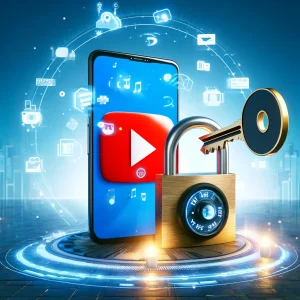Did you know that over 3.9 billion people around the world own a smartphone? With such widespread use of mobile devices, it’s no wonder that phone verification has become a common security measure for many platforms and apps, including Uber. But what if you don’t have access to your phone or simply want to skip the hassle of verifying your number every time you log in?
We’ve all been there – in a rush to catch a ride and suddenly faced with the dreaded verification code prompt. We’ve got some tricks up our sleeves that will help you bypass this step and get straight into booking your next Uber ride hassle-free. Whether you’re using an Android or iOS device, we’ll walk you through the steps to login without having to go through the usual phone verification process.
So sit back, relax, and let us show you how to navigate the world of Uber without any pesky phone verifications getting in your way.
Understanding Uber Login
Uber, the popular ride-sharing platform, has a straightforward login process that requires users to provide their phone number for verification. However, some people may wonder if it’s possible to log in without undergoing this phone verification step. Let’s explore the different aspects of Uber login and understand why phone verification is an essential part of the process.
Security Measures
Uber takes robust measures to ensure the safety of its users’ information. Multiple layers of security are in place to protect against unauthorized access or data breaches. Advanced encryption techniques are utilized to safeguard sensitive data such as personal details and payment information.
By requiring phone verification during login, Uber adds an extra layer of security. This ensures that only individuals with valid and verified phone numbers can access their accounts. Phone verification helps prevent unauthorized access attempts by verifying the authenticity of each user.
Enhanced Safety
Safety is a top priority for Uber, both for riders and drivers alike. The company continuously invests in technology and resources to enhance safety features on its platform. By doing so, they aim to provide a secure experience for everyone using their services.
Various safety features have been implemented within the app itself. For example, riders can share trip details with trusted contacts who can track their journey in real-time through GPS tracking provided by the app. There is an emergency assistance button available during rides that allows users to quickly contact authorities if needed.
For drivers too, there are safety measures in place such as driver background checks before onboarding onto the platform and ongoing monitoring systems that help identify any potential risks or issues.
Identity Verification
Identity verification is another crucial aspect of logging into your Uber account securely. When creating an account or updating certain information like your payment method or profile picture, you may be required to go through a verification process.
This identity verification helps maintain a safe and trustworthy environment within the Uber community by ensuring that users are who they claim to be. It also helps prevent fraudulent activities and protects both riders and drivers from any potential harm.
Uber Login Without Phone Verification
Accessing Account
Users can easily access their Uber account through the mobile app or website. To log in, all you need are your login credentials, such as your username and password. Once you have entered this information correctly, you will be granted access to your account. The login process is simple and straightforward, ensuring that users can quickly get into their accounts without any hassle.
When logging in to Uber, whether it’s through the mobile app or website, make sure you enter your username and password accurately. Double-check for any typos or errors before hitting the login button. This will help prevent any issues with accessing your account due to incorrect information.
Lost Mobile Solutions
In case of a lost mobile device, don’t worry! Uber provides solutions for users who have lost their phones but still need access to their accounts. If you find yourself in this situation, follow these steps to regain access without phone verification:
- Visit the Uber website: Open a web browser on any device (such as a computer or tablet) and navigate to the official Uber website.
- Click on “Sign In”: On the homepage of the Uber website, locate and click on the “Sign In” option.
- Enter email address: Instead of entering your phone number during login, input the email address associated with your Uber account.
- Request password reset: Click on “Forgot Password” if prompted or go directly to the password reset page by visiting https://auth.Uber.com/password/reset.
- Follow instructions: You will receive an email from Uber with instructions on how to reset your password securely.
- Reset password: Follow those instructions carefully and create a new password for your account.
- Log in using new credentials: Once you have successfully reset your password, return to either the mobile app or website’s login page and use your newly created credentials (email address + new password) to log in.
Solving Common Login Problems
Common Issues
During the login process on Uber, users may encounter certain challenges that can prevent them from accessing their accounts. Understanding these common issues can help users troubleshoot problems effectively.
One common issue is forgotten login credentials. It’s not uncommon for users to forget their usernames or passwords, especially if they haven’t logged in for a while. In such cases, Uber provides options to recover or reset the login information. Users can click on the “Forgot Password” link and follow the prompts to regain access to their accounts.
Another issue that users may face is account lockout due to multiple failed login attempts. This security measure helps protect user accounts from unauthorized access. If you find yourself locked out of your account, you will need to wait for a specified period before attempting another login.
Some users may experience difficulties logging in due to network connectivity problems or server issues on Uber’s end. These technical glitches can temporarily hinder the login process but are usually resolved quickly by Uber’s technical team.
To overcome these common issues during the login process, it is essential for users to be patient and persistent. Following troubleshooting steps provided by Uber can often resolve these problems efficiently.
Troubleshooting Steps
Uber understands that encountering login-related issues can be frustrating and has developed step-by-step troubleshooting guidance for its users. By following specific steps, users can resolve common login problems with ease.
Firstly, if you have forgotten your password or username, navigate to the “Forgot Password” page on Uber’s website or app and provide the required information as prompted. This will initiate a password reset process through which you’ll receive instructions via email or SMS (if phone number verification is enabled) on how to create a new password and regain access to your account.
If you find yourself locked out of your account due to too many failed attempts at logging in, it is crucial to wait for the specified lockout period before trying again. This waiting period ensures the security of your account and prevents unauthorized access.
In cases where network connectivity or server issues are causing login problems, it is advisable to check your internet connection and try again later. Often, these technical glitches are temporary and resolved by Uber’s technical team promptly.
Use Passkeys for Sign-In
Passkeys are an effective way to enhance the security of your Uber account and provide an additional layer of protection during the login process. By implementing passkeys, you can ensure that only authorized individuals have access to your account.
One of the key benefits of using passkeys is that they require an extra authentication step, adding an extra level of security to your account. When logging in, you will be prompted to enter a unique passkey in addition to your regular username and password. This means that even if someone manages to obtain your login credentials, they won’t be able to access your account without the correct passkey.
The implementation of passkeys helps prevent unauthorized access by acting as a barrier between potential hackers and sensitive information associated with your Uber account. It adds another layer of protection against malicious actors who may attempt to gain unauthorized entry into your account.
By utilizing passkeys, you can enjoy peace of mind knowing that your personal information is safeguarded from prying eyes. Your financial details, trip history, and other sensitive data will remain secure behind this additional authentication step.
To further enhance the security offered by passkeys, it’s recommended that you use strong passwords for both your Uber account and any associated email addresses or phone numbers. Consider using a reliable password manager tool to generate complex passwords and store them securely.
Authorization Hold on Payments
It’s important to understand how authorization holds work on payments. These holds are temporary and are put in place for security purposes. They act as a precautionary measure against fraudulent activities, ensuring that both riders and drivers are protected.
So, what exactly is an authorization hold? It’s a temporary charge that is placed on your payment method when you request a ride or make any other transaction through the Uber app. This hold ensures that you have sufficient funds available to cover the cost of the ride or any potential additional charges such as tolls or cleaning fees.
The amount of the authorization hold may vary depending on factors such as your location, distance traveled, and any applicable fees. For example, if you’re taking a longer trip or crossing multiple tolls, the hold might be higher than for a shorter journey without additional expenses.
It’s important to note that while this hold appears as a pending transaction on your bank statement or credit card account, it doesn’t mean that the money has been deducted from your account permanently. The actual charge will only occur once the trip is completed and finalized.
Understanding how authorization holds work can help users navigate any potential inconveniences they may encounter during their Uber experience. By being aware of these temporary charges and knowing that they will be released once transactions are complete, users can better manage their finances and avoid unnecessary concerns about their account balances.
Real-Time Photo Verification
Implementing Verification
Uber takes user verification seriously to ensure a safe environment for everyone. They have implemented various processes to confirm the authenticity of users’ identities. By implementing verification, Uber aims to prevent fraudulent activities and enhance overall safety.
Verification procedures are in place to maintain the integrity of the platform. When signing up for an account, Uber may require users to provide certain personal information such as their name, email address, and profile photo. This helps create a more secure community by ensuring that all users are who they claim to be.
In addition to basic information, Uber also utilizes real-time photo verification as part of their authentication process. This involves taking a selfie or uploading a recent photo during registration or when prompted by the app. The uploaded photo is then compared with existing images on file using advanced technology algorithms.
By leveraging real-time photo verification, Uber can quickly verify whether the person registering matches their profile picture while adding an extra layer of security against impersonation attempts and fake accounts.
Enhancing Rider Safety
Ensuring rider safety is one of Uber’s top priorities. They continuously work towards enhancing safety measures through various initiatives and features designed specifically for riders’ protection during their journeys.
Uber has implemented several safety protocols within its app that help both riders and drivers feel secure throughout each trip. For example, they offer features like GPS tracking which allows riders to share their location with trusted contacts in real-time so that someone can monitor their journey remotely.
Another notable feature is the ability for riders to view driver details before getting into a vehicle. This includes the driver’s name, license plate number, vehicle make and model – allowing passengers peace of mind knowing they are entering the correct car driven by an authorized driver.
Furthermore, Uber provides 24/7 support through its customer service channels where riders can report any concerns or incidents they may encounter during or after a trip.
These efforts demonstrate how seriously Uber takes the safety of their riders. By implementing these safety features and protocols, Uber aims to provide a secure experience for all users.
PIN Verification for Rides
Setting Up PIN
- Users can set up a personal identification number (PIN) for added account security.
- A PIN adds an extra layer of protection during the login process.
- Setting up a PIN is a quick and effective way to enhance account security.
In addition to other security measures like Real-Time Photo Verification, Uber offers users the option to set up a personal identification number (PIN). This additional layer of security helps protect your account from unauthorized access. By setting up a PIN, you can ensure that only you have access to your Uber account.
To set up a PIN, follow these simple steps:
- Open the Uber app on your mobile device.
- Tap on the menu icon located in the top left corner of the screen.
- Select “Settings” from the menu options.
- Scroll down and tap on “Security.”
- Under “Two-step verification,” select “Add Security Code.”
- Enter a four-digit code that will serve as your PIN.
- Confirm your chosen code by entering it again when prompted.
Once you’ve successfully set up your PIN, it will be required each time you log in to your Uber account or make any changes related to sensitive information such as payment methods or passwords.
Ensuring Ride Security
- Uber takes several steps to ensure the security of rides for both riders and drivers.
- Safety features like GPS tracking, driver screening, and ride-sharing details contribute to ride security.
- The implementation of these measures helps create a safe environment for all parties involved.
Uber has implemented various safety features designed with both riders and drivers in mind. These measures work together seamlessly to provide peace of mind during every trip:
GPS Tracking: Every Uber ride is tracked using GPS technology, allowing both riders and drivers to know their exact location at all times during the trip. This not only helps with navigation but also provides an extra layer of security by ensuring that the ride is going in the intended direction.
Driver Screening: Uber conducts thorough background checks on all drivers before they are approved to provide rides. This includes checking their driving records and criminal histories to ensure that only qualified and trustworthy individuals are allowed to participate in the platform.
Ride-Sharing Details: Before getting into a vehicle, riders can verify important details such as the driver’s name, photo, license plate number, and vehicle make and model. This information helps confirm that you are entering the correct car and gives you peace of mind knowing who your driver is.
New Rider Verification Feature
Feature Overview
The new rider verification feature in Uber allows users to log in without the need for phone verification. This feature provides a convenient and hassle-free way for riders to access their accounts and request rides. Instead of going through the process of receiving a verification code via SMS, riders can now simply enter their username and password to log in.
This feature offers several key benefits for users. First and foremost, it saves time by eliminating the need to wait for a verification code to be sent to your phone. With just a few taps on your device, you can quickly access your account and book a ride within seconds. This streamlined login process reduces the chances of encountering technical issues that may arise during phone verification.
The functionality of this new rider verification feature is straightforward. After entering your username and password on the login screen, Uber will verify your credentials internally without relying on an additional layer of security through phone verification. Once verified, you will have full access to all the features and services offered by Uber.
Impact on Safety
One might wonder how logging into Uber without phone verification impacts overall safety? Surprisingly enough, this feature actually enhances user security rather than compromising it. By removing the requirement for phone verification during login, Uber has implemented alternative measures that ensure user safety throughout their journey.
For instance, when creating an account or adding payment information within the app itself, there are still stringent security protocols in place such as two-factor authentication (2FA) or email confirmation processes that help prevent unauthorized access or fraudulent activities.
Furthermore, Uber’s commitment to maintaining a secure environment extends beyond just verifying user identities during login. The company continuously invests in advanced technology systems that monitor driver behavior and track each trip from start to finish using GPS data.
Requesting Rides Without App
If you’re looking to log in to Uber without phone verification, there are alternative methods available that can help you access your account securely. These options provide users with choices that suit their preferences and needs.
One option is to use the Uber website on a computer or laptop instead of the mobile app. By visiting the official Uber website, you can log in using your username and password without needing phone verification. This method allows you to request rides, view trip history, and manage your account just like you would on the app.
Another alternative is to contact Uber support directly for assistance. If you’re having trouble logging in or verifying your phone number, reaching out to their customer support team can be helpful. They may be able to guide you through the login process or provide alternative solutions for accessing your account.
Some users have reported success by using virtual phone numbers or online messaging services as a workaround for phone verification. These services allow you to receive SMS messages and calls without using an actual physical device. However, it’s important to note that not all virtual numbers or messaging services may work with Uber’s verification system.
While these alternate methods can be useful for logging into your Uber account without phone verification, it’s essential to prioritize security when accessing any online platform. Make sure that any third-party websites or services used are reputable and trustworthy before providing personal information such as usernames and passwords.
If using Uber isn’t an option for your transportation needs or if you prefer alternatives beyond ride-hailing services, there are other options available:
- Public Transportation: Utilize public transportation systems such as buses, trains, subways, trams, or light rails depending on what is available in your area.
- Taxi Services: Consider traditional taxi companies operating in your city as they often offer similar convenience.
- Car Rental: Renting a car from a rental company can provide you with the freedom to travel at your own pace.
- Carpooling: Connect with others in your community or workplace who are heading in the same direction and share rides together.
- Bicycles or Scooters: If you’re traveling short distances, using bicycles or scooters may be a convenient and eco-friendly option.
Final Remarks
Congratulations! You have now learned various methods to login to Uber without phone verification. From using passkeys and real-time photo verification to PIN verification and the new rider verification feature, Uber has implemented several options to enhance security and convenience for its users. By understanding these alternatives, you can navigate any login problems that may arise and enjoy a seamless experience with the app.
Now that you are equipped with this knowledge, go ahead and give it a try! Login to Uber without the hassle of phone verification and start enjoying your rides right away. Remember, if you encounter any issues, refer back to this article for guidance. Uber is constantly evolving, so stay updated with their latest features and enhancements. Happy riding!
Frequently Asked Questions
How can I log in to Uber without phone verification?
To log in to Uber without phone verification, you can try using your email address instead of your phone number during the login process. If that doesn’t work, you may need to contact Uber support for further assistance.
What are passkeys for sign-in?
Passkeys are a convenient way to sign in to your Uber account without having to remember a password. It is a unique combination of letters and numbers that you set up as an alternative sign-in method. Simply enter your passkey when prompted during the login process.
How does real-time photo verification work?
Real-time photo verification is a security feature implemented by Uber. During the login process or before certain rides, you may be asked to take a selfie within the app. This helps ensure that the person using the account matches their profile picture and adds an extra layer of security.
Can I request rides without using the Uber app?
Yes, you can request rides from Uber even if you don’t have access to the app. Simply visit their website on your mobile browser or use their mobile web interface called “m.uber.com” to book a ride without needing to install or use the traditional app.
What is new rider verification feature?
The new rider verification feature is designed by Uber as an additional safety measure for first-time riders. It requires new users with limited trip history to provide additional information such as a valid ID or credit card details before they can start requesting rides through the platform.





